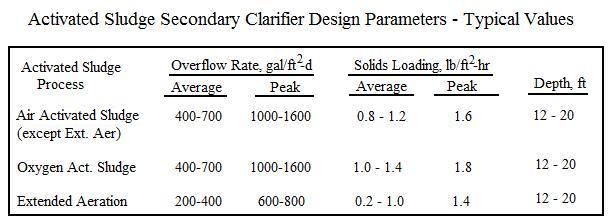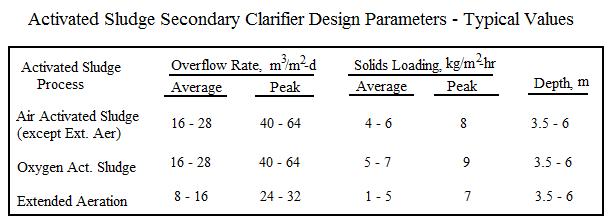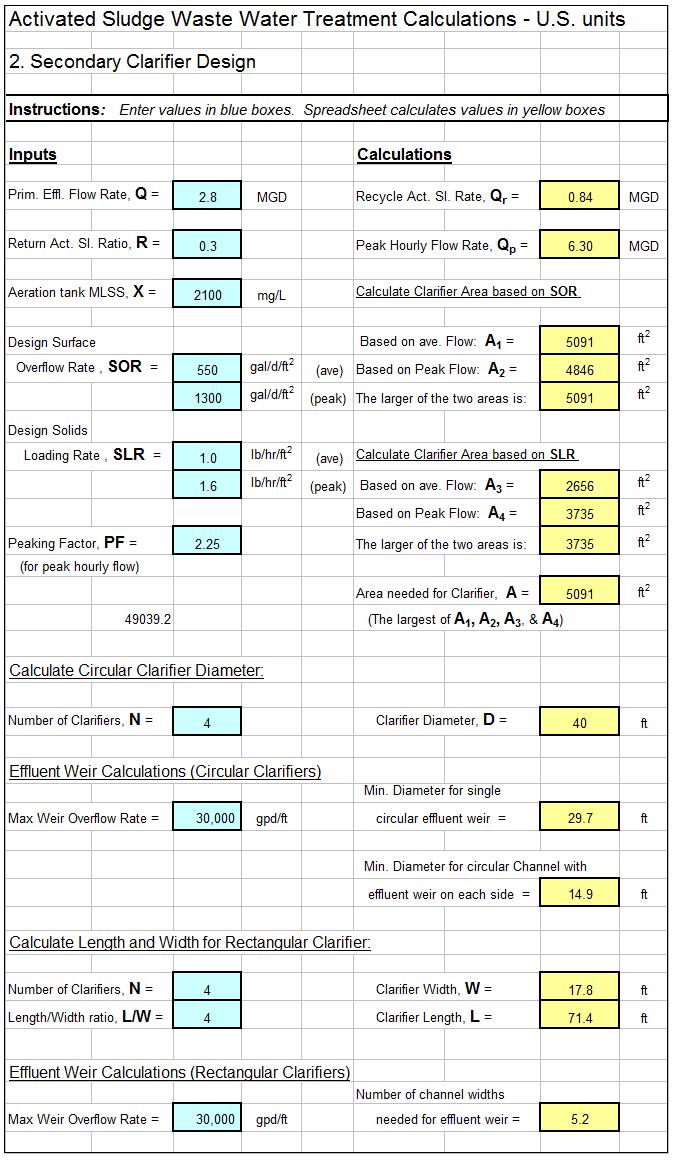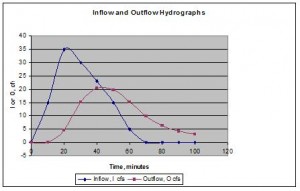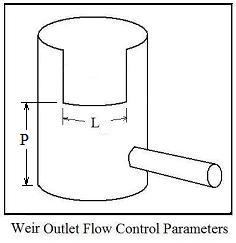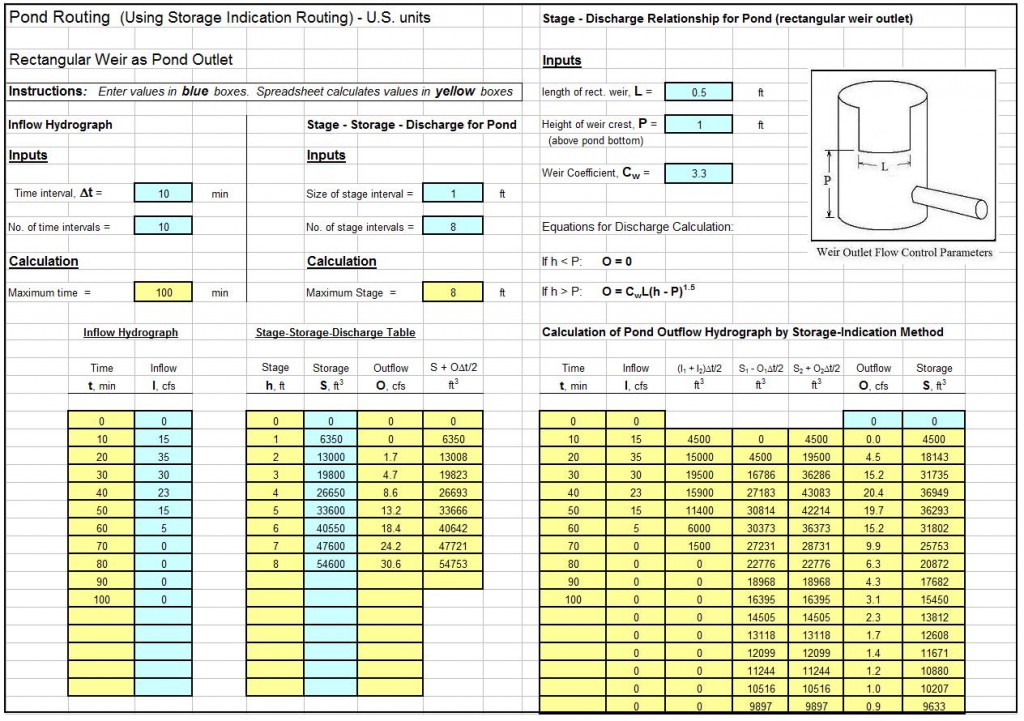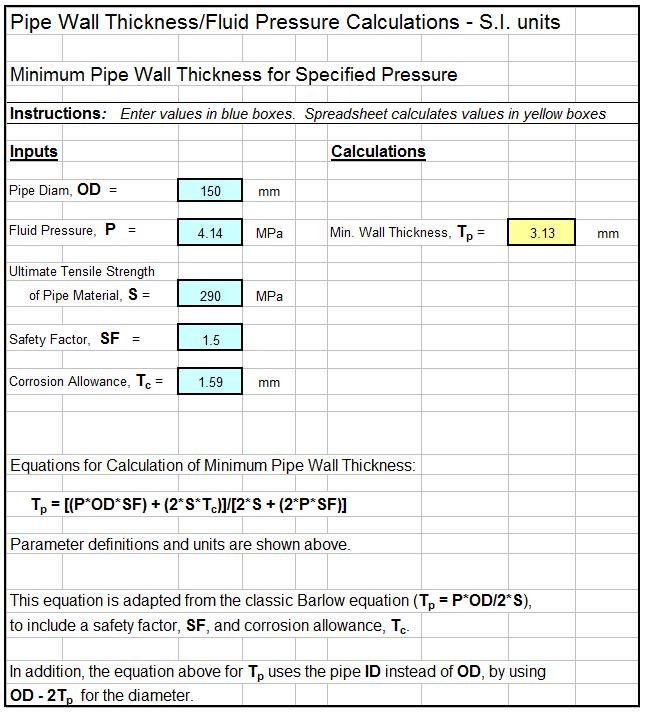Where to Find Activated Sludge Secondary Clarifier Design Spreadsheets
For an Excel spreadsheet for activated sludge secondary clarifier design calculations, click here to visit our spreadsheet store. Obtain a convenient, easy to use primary and secondary clarifier design spreadsheets for only $11.95. Read on for information about the use of an Excel spreadsheet for activated sludge secondary clarifier design calculations.
Activated Sludge Secondary Clarifier Design Parameters
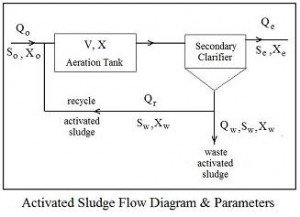 The parameters typically used for activated sludge secondary clarifier design are the surface overflow rate (SOR), solids loading rate (SLR), and weir overflow rate (WOR). Activated sludge parameters are shown in the flow diagram at the right. The equations defining these three parameters are:
The parameters typically used for activated sludge secondary clarifier design are the surface overflow rate (SOR), solids loading rate (SLR), and weir overflow rate (WOR). Activated sludge parameters are shown in the flow diagram at the right. The equations defining these three parameters are:
SOR = Qo/A, SLR = (Qo + Qr)X/A, and WOR = Qo/L, where:
- Qo = primary effluent flow rate in MGD (U.S.) or m3/d (S.I.)
- A = total surface area for secondary clarifier(s) in ft2 (U.S.) or m2 (S.I.)
- Qr = recycle activated sludge flow rate in MGD (U.S.) or m3/d (S.I.)
- X = mixed liquor activated sludge solids concentration in mg/L (U.S. or S.I.)
- L = length of secondary clarifier effluent weir in ft (U.S.) or m (S.I.)
Typical values of surface overflow rate and solids overflow rate for activated sludge secondary clarifier design are shown in the tables below:
Calculation of Activated Sludge Secondary Clarifier Surface Area
The equation for calculating the needed activated sludge secondary clarifier surface area from a design SOR value with units as shown above is: A = Qo*106/SOR
The formula for calculating activated sludge secondary clarifier surface area from a design value of SLR with parameter units as shown above is: A = (Qo + Qr)*8.34*X/SLR
An Excel Spreadsheet as an Activated Sludge Secondary Clarifier Design Calculator
The Excel spreadsheet template shown below can be used to carry out the activated sludge secondary clarifier design calculations described above. Why bother to make these calculations by hand? This Excel spreadsheet can handle primary and secondary clarifier surface area calculations and determine diameter for circular clarifier(s) or length and width for rectangular clarifier(s) and is available in either U.S. or S.I. units at a very low cost (only $11.95) in our spreadsheet store. These spreadsheets also make weir overflow calculations to aid in effluent weir design.
Reference
1. Metcalf & Eddy, Inc, (revised by Tchobanoglous, G, Burton, F.L., Stensel, H.D., Wastewater Engineering Treatment and Reuse, 4th Edition, New York, NY, 2003.

